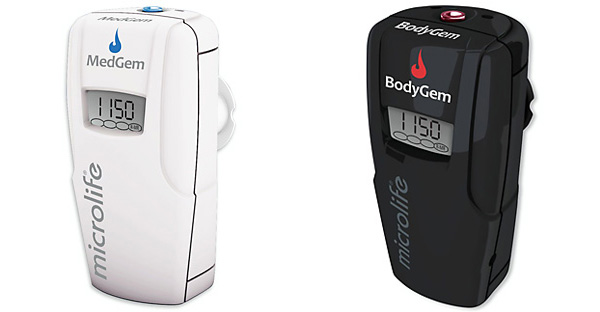To sell more indirect calorimeters, you’ll need a strategic approach that combines understanding your target market, highlighting the unique value of your product, and leveraging effective marketing and sales tactics.
Here’s a concise plan based on the context of indirect calorimeters, which are used to measure energy expenditure and metabolic rates in clinical, research, and fitness settings:
1. Identify and Segment Your Target Market:
Hospitals and Clinics: Focus on departments like nutrition, critical care, and neurocritical care, where precise energy expenditure measurements are critical for patient outcomes (e.g., ICU patients, neurocritical care).
Research Institutions: Universities and labs conducting metabolic or physiological studies need reliable, validated equipment like the Omnical.
Fitness and Sports Centers: Athletes and trainers use indirect calorimetry to optimize nutrition and performance.
Bariatric and Weight Management Clinics: Devices like the MedGem are popular for personalized nutrition plans.
2. Highlight Key Benefits and Differentiators:
Emphasize that indirect calorimetry is the gold standard for measuring resting energy expenditure (REE) and substrate utilization, unlike less accurate predictive equations.
Promote portability, ease of use, and accuracy for devices like the MedGem or BodyGem, which require less technical expertise and are cost-effective.
Address limitations of competitors (e.g., bulky equipment, long measurement times, or inaccuracy in certain patient groups) and showcase how your product overcomes these (e.g., user-friendly metabolic carts or validated accuracy).
Highlight reimbursement potential (e.g., Medicare/Medicaid coverage for CPT 94690, averaging $60–$80 per test), which can offset costs for clinicians.
3. Develop Targeted Marketing Strategies:
Educational Content: Create webinars, whitepapers, or case studies showing how indirect calorimetry improves patient outcomes (e.g., 75–80% of ICU patients benefit from adjusted nutrition plans). Share success stories, like the MedGem’s use in The Biggest Loser.
Trade Shows and Conferences: Exhibit at medical, nutrition, or sports science events to demo your device to decision-makers.
Digital Marketing: Use SEO to target keywords like “indirect calorimetry,” “metabolic rate testing,” or “REE measurement.” Run ads on platforms like LinkedIn to reach healthcare professionals or X for fitness-focused audiences.
Partnerships: Collaborate with nutritionists, dietitians, or fitness influencers to endorse your product.
4. Address Barriers to Adoption:
Cost Concerns: Offer financing options or highlight ROI (e.g., MedGem kits generate $2,800–$3,600 in revenue from 40 tests). Emphasize long-term savings from reduced maintenance (e.g., no sensor replacement for MedGem).
Training and Support: Provide user-friendly software, implementation guides, and training to reduce the learning curve.
Patient Suitability: Acknowledge limitations (e.g., not suitable for claustrophobic patients or those on high-flow oxygen) and offer solutions like canopy systems for spontaneously breathing patients.
5. Leverage Distributors and Partnerships:
Partner with medical equipment distributors like TBS India Ltd. or Summit Healthcare for wider reach.
Work with companies like COSMED or Maastricht Instruments to co-market advanced metabolic carts for research or clinical use.
6. Stay Competitive on Pricing:
Monitor competitors’ pricing (e.g., MedGem reduced from $3,999 to $3,499 to stay competitive). Offer discounts for bulk purchases or extended warranties.
Bundle accessories (e.g., mouthpiece filters, software) to add value.
By focusing on these strategies, you can effectively target key markets, address customer pain points, and differentiate your indirect calorimeters to boost sales.
For the best care, the American Dietetics Association recommends using indirect calorimetry to measure RMR for the most accurate assessment of nutritional needs.
Estimation formulas cannot factor in thyroid issues, the effects of medications, etc.
The Microlife BodyGem and MedGem indirect calorimetry devices measure your clients Resting Metabolic Rate, to optimize their weight loss results.
 Instead of estimating RMR with a formula, the BodyGem and MedGem scientifically measure a clients Metabolic Fingerprint, that is unique to them.
Instead of estimating RMR with a formula, the BodyGem and MedGem scientifically measure a clients Metabolic Fingerprint, that is unique to them.
For the best care, the American Dietetics Association recommends using indirect calorimetry to measure RMR for the most accurate assessment of nutritional needs.
The BodyGem and MedGem are the same type indirect calorimeter. They have the same functionality, accuracy and reliability.
The difference is that the MedGem is a FDA 510K-cleared, class II, medical device, which allows licensed clinicians to make insurance claims on their measurements.
Get more information on the BodyGem and MedGem indirect calorimeters
Call 720-431-1461 to get your questions answered.
Or complete the CONTACT FORM and we will email you or call you.